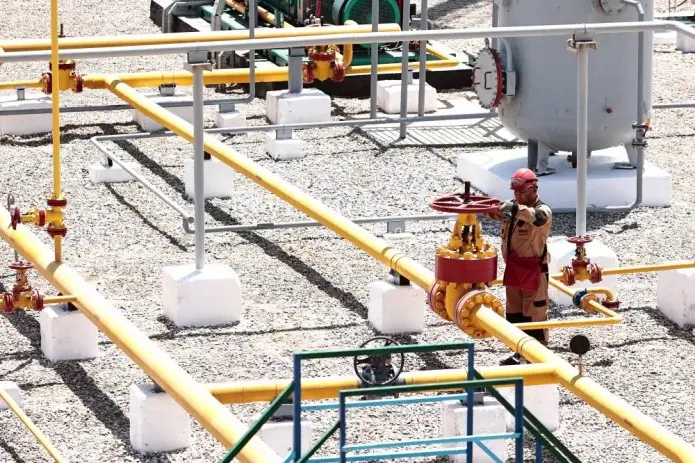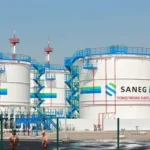Uzbekistan’s Oil and Gas Policy: Reforms, Energy Transition, and Regional Ambitions Shape

Uzbekistan’s Oil and Gas Policy: Reforms, Energy Transition, and Regional Ambitions Shape 2025
Tashkent, Uzbekistan
Uzbekistan’s oil and gas sector, a critical driver of its economy, is undergoing significant transformation in 2025, propelled by government policies aimed at boosting production, attracting foreign investment, and aligning with global energy transition goals. With natural gas accounting for 85% of the country’s energy mix, policies under President Shavkat Mirziyoyev’s administration are focusing on modernization, export expansion, and sustainability. However, global market dynamics and regional geopolitical challenges are testing the effectiveness of these reforms.
Policy Reforms to Boost Production
Uzbekistan’s government has prioritized increasing oil and gas output through its 2019–2030 Energy Strategy, which allocates $33 billion to develop 30 new oil and gas projects. In 2025, policies are centered on enhancing exploration and production, with a target to maintain oil output at 150,000 barrels per day (b/d) and increase natural gas production to 50 billion cubic meters annually. The Ministry of Energy has streamlined licensing processes, reducing approval times by 30% to attract international firms like Lukoil and CNPC. Tax incentives, including a 20% reduction in the petroleum resource rent tax for new projects, are driving investments in fields like Galkynysh, which produces 1.5 trillion cubic meters of gas annually.
Infrastructure Modernization and Gas Exports
Policies to upgrade midstream infrastructure are critical to Uzbekistan’s ambition to become a Central Asian energy hub. The government is investing $2 billion in 2025 to modernize the Central Asia–China gas pipeline, aiming to boost export capacity to 15 billion cubic meters per year, primarily to China. A new regulatory framework introduced in 2024 mandates advanced metering systems to reduce gas losses, which accounted for 10% of production in 2024. The Uzbekistan GTL plant, supported by a $1 billion government-backed loan, is scaling up synthetic fuel production to 1.5 million metric tons by 2026, enhancing downstream capabilities and reducing reliance on imported fuels.
Energy Transition and Sustainability Goals
Uzbekistan’s commitment to sustainability is reflected in its 2030 Green Economy Strategy, which aligns with global net-zero goals. Policies incentivizing carbon capture, utilization, and storage (CCUS) have led to pilot projects at the Fergana refinery, targeting 500,000 metric tons of CO2 capture annually by 2028. The government is also promoting renewable energy, with a $3 billion investment in 5 gigawatts of solar and wind projects by 2030, supported by tax breaks for companies like Uzbekneftegaz integrating renewables into operations. However, only 35% of oil and gas executives surveyed in 2025 prioritize low-carbon investments, citing high costs and limited infrastructure as barriers.
Attracting Foreign Investment
To counter global oversupply risks, with Brent crude prices projected to fall from $68 per barrel in August 2025 to $50 per barrel in Q1 2026, Uzbekistan is enhancing its investment climate. The 2024 Foreign Investment Law offers 10-year tax holidays for projects exceeding $50 million, attracting firms like Russia’s Lukoil, which is investing $1.2 billion in the Kandym gas field, and China’s CNPC, expanding operations in Bukhara-Khiva. These policies have boosted foreign direct investment in the energy sector by 15% in 2024, though bureaucratic hurdles and regional instability remain concerns.
Geopolitical and Regional Challenges
Uzbekistan’s policies are shaped by its strategic position in Central Asia. The government is strengthening energy ties with China and Russia through the Central Asia–China pipeline and new agreements, such as a $1 billion deal with Gazprom for gas exports. However, geopolitical risks, including tensions in the Strait of Hormuz, which handles 21% of global petroleum liquids, could disrupt Uzbekistan’s oil imports. The country’s role in BRICS+, following its 2024 inclusion, enhances its influence in global energy markets, but alignment with sanctioned nations like Russia and Iran raises risks of secondary sanctions.
Petrochemical Sector Support
Government policies are fostering growth in the petrochemical industry, which is expected to drive 18–20% of global oil demand by 2040. The Uzbekistan GTL plant and Bukhara refinery are receiving $500 million in subsidies to expand polymer production to 1 million metric tons annually by 2027. New regulations mandating digital technologies, such as AI-driven process optimization, have reduced production costs by 7% at these facilities in 2024. However, competition from Middle Eastern producers and global supply chain disruptions pose challenges to export growth.
Workforce and Industry Reforms
To address workforce challenges, the government is investing $200 million in retraining programs, targeting 1,000 oil and gas workers for renewable energy roles by 2027. Policies encouraging mergers and acquisitions (M&A) have led to 50% of Uzbek firms planning deals in 2025, with MOL Group’s $300 million stake in the Surkhandarya field as a key example. These reforms aim to enhance efficiency and technology adoption, though 1,500 job cuts in 2024–2025 reflect cost pressures amid global market volatility.
Outlook for 2025
Uzbekistan’s oil and gas policies in 2025 are driving production growth, infrastructure modernization, and sustainability, positioning the country as a regional energy leader. However, global oversupply risks, geopolitical uncertainties, and infrastructure limitations pose significant challenges. As Uzbekneftegaz and international partners implement these policies, their success will determine Uzbekistan’s ability to strengthen its energy sector and contribute to global markets through 2030.







